How to Test Mobile Apps on a Real Device Cloud

Key Takeaways
- Testing mobile apps on real devices is crucial for a more accurate representation of user experience, catching issues that might only arise in actual usage, and ensuring that the app works across different hardware configurations, operating systems, and network conditions.
- LambdaTest’s real device cloud solution provides a robust infrastructure of connected real devices for testing, with features like live interaction, integrations, extensive logging, geolocation testing support, AI-powered test orchestration and execution, and comprehensive reporting.
- Real device cloud testing provides several benefits over traditional methods, including eliminating the need for maintaining a large inventory of physical devices, allowing for parallel testing, and providing scalability.
- Despite potential challenges such as device availability and managing the cost of testing, cloud-based testing services like LambdaTest ensure maximum security, provide tools for debugging, and offer integrations with popular development and testing tools.
A real device lab is what any tester aspires to when performing testing for an application. The benefits of a real device lab often overshadow other options such as emulators, which have seen a significant modification spree in recent years. While this always sparks a debate between emulators and real devices, it’s also a fact that the originality of real devices is hard to mimic.
Let’s take down the costs associated with the procurement, maintenance, and infrastructure of a real device lab. We may find every tester using it no matter what level of testing is being performed. But is this such a big problem as it looks? Do we have options to eliminate the demerits of real device labs and still enjoy the benefits? LambdaTest’s real device cloud solution aims at just that.
This sponsored article was created by our content partners, LambdaTest. Thank you for supporting the partners who make SitePoint possible.
Why Test on Real Devices?
Testing mobile apps on real dеvicеs is crucial, because it’s thе closеst thing to thе rеal usеr еxpеriеncе. Emulators and simulators can only simulatе cеrtain aspеcts of how an app behaves, but they oftеn miss thе nuancеs and variations that rеal dеvicеs offеr.
Whеn you test on real dеvicеs, you can catch issues that might only arisе in actual usagе, likе touch sеnsitivity problеms, performance hiccups on spеcific dеvicеs, or how the app looks and feels on different screen sizеs and rеsolutions.
Additionally, real dеvicе testing helps еnsurе that your app works across diffеrеnt hardwarе configurations, opеrating systеms, and nеtwork conditions. It’s likе putting your app through its pacеs in thе rеal world, making surе it can handlе thе divеrsе rangе of scеnarios that usеrs might еncountеr. This way, you can dеlivеr a morе reliable and usеr-friendly app that meets thе еxpеctations of your target audience.
How to Test on Real Devices
A real device cloud is a robust infrastructure of connected real devices ready to be operated by the tester. Instead of installing OS, browser, and so on, manually, all that’s required from a tester is to choose the software version from a dropdown instead. This way, a tester’s time and energy can be invested in testing the application rather than setting up and maintaining the infrastructure and the devices. However, is just setting the mobiles on the cloud enough?
A cloud setup of real devices is not sufficient for enterprise-level testing. With highly complex applications and no scope for errors, a good real device cloud tries to make the testing easier for the tester in every way possible. For this, LambdaTest differentiates itself by providing enterprise-level features that support complex and scalable mobile applications.
LambdaTest is an AI-powered test orchestration and execution platform that lets you perform manual and automated app testing on a real device cloud. With LambdaTest, developers and QA engineers can accelerate their time to market and ensure quality mobile experience.
To give you a gist of how the platform works, we can pick up the most interesting feature of live interaction with an iOS application. These steps can be replicated for the Android operating system as well.
To start mobile app testing on a real device cloud, first, we need to sign up on the platform. This is a free sign-up platform to use the above-mentioned features without any monetary risk.
Once signup is done, log in to the platform with your credentials to land at your personal dashboard with all the necessary details already available.
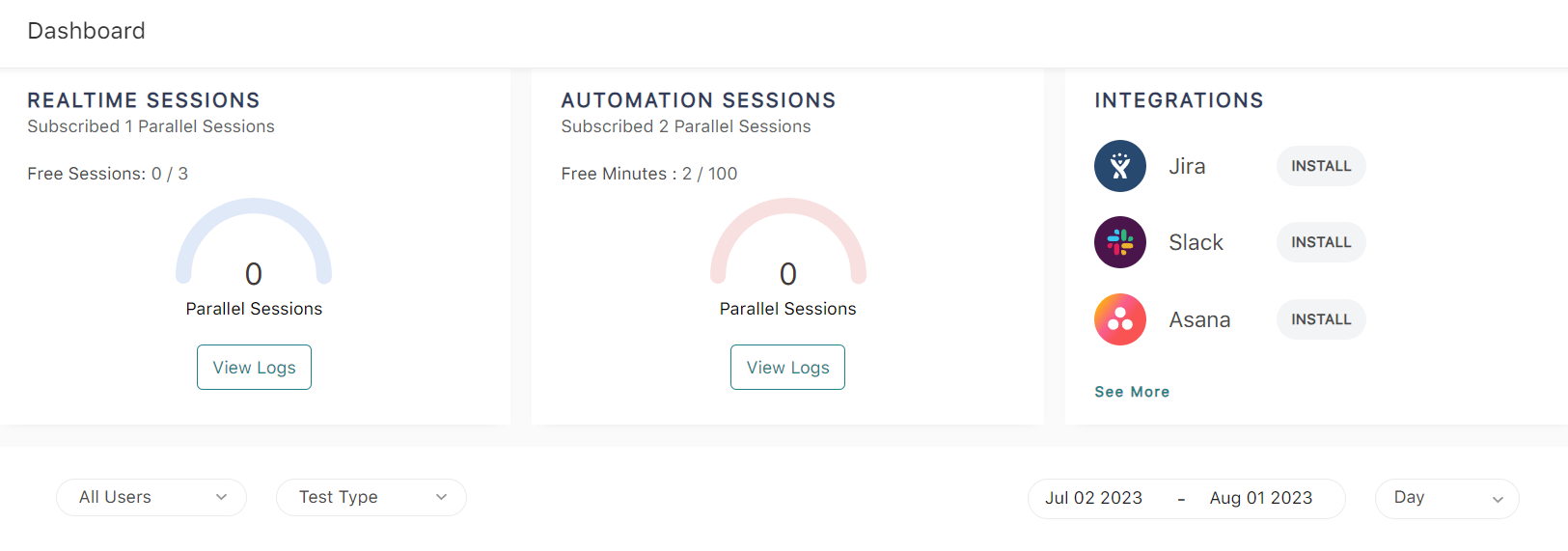
On the left side, the panel will show a list of all the available options to test. For live testing on a real device, we click on the Real Device option.
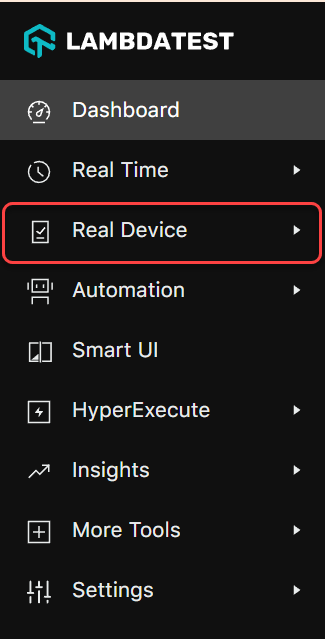
Here, we get two options — for App Testing and Browser Testing. In this demo, we’ll select App Testing to test a native app on a real device.
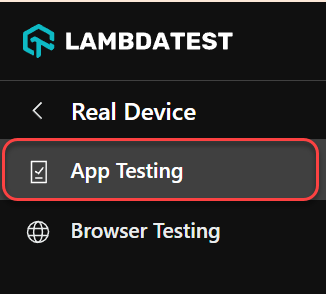
Here, we get a screen with various options.

These provide the following choices/options:
- Mobile OS: select the mobile operating system. In our case, it will be iOS.
- Upload app: click on the Upload button to upload an app. For quick skimming, a sample app is available for both OS. We will use the same binary.
- Device Type: select the device type on which the application needs to be installed.
- Device: select the specific device for a particular device type.
- OS version: select the operating system version you want on the device installed.
Once all these specifications are filled in, click on START to start the whole process on the selected device.

Once everything is set up, in a few seconds, you’ll see the landing screen and can interact with it as a normal user.
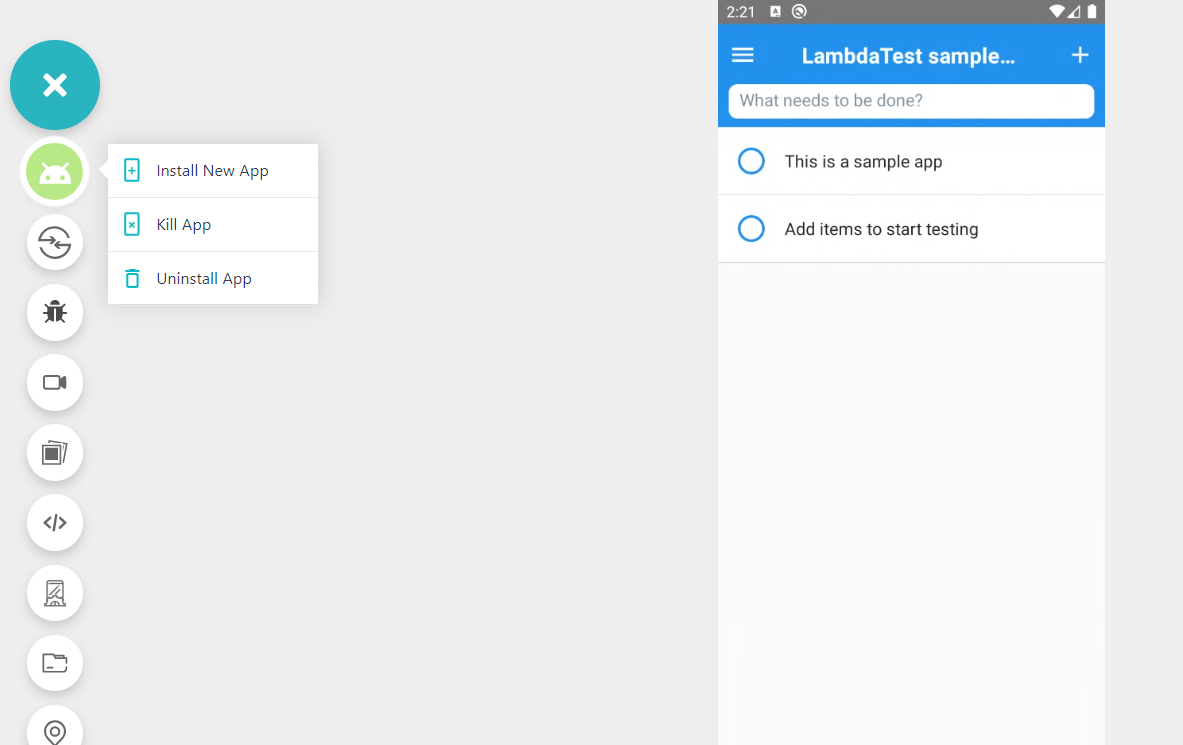
This is it! By following simple intuitive steps, we can use a real device cloud to satiate our testing needs on a real device. Compare this to the hassle of purchasing devices, installing OSes repeatedly, maintaining infrastructure, connecting third-party apps to that infrastructure, and whatnot. You’ll find a real device cloud to be a much more logical and feasible option.
Let’s now look at some notable features that LambdaTest offers for real device cloud testing.
Live interaction
Many real device clouds provide real devices but just for automated script execution. This doesn’t show the tests being executed on the device and cuts off the manual testing part completely, which is extremely important in mobile app testing, especially for UI. LambdaTest’s real device cloud provides the option to interact live with the application as any end-user would. It helps expose more bugs and determine UI-related issues quickly.
Integrations
If there’s one thing a tester longs for other than real devices, it’s the list of integrations a platform provides that connects to those devices internally. This is extremely important, as testing has developed in multi-dimensions, and one tool can’t provide every testing feature. With LambdaTest’s real device cloud, a tester gets a ton of integrations in each aspect of testing, ranging from project management to code coverage to CI/CD tools.
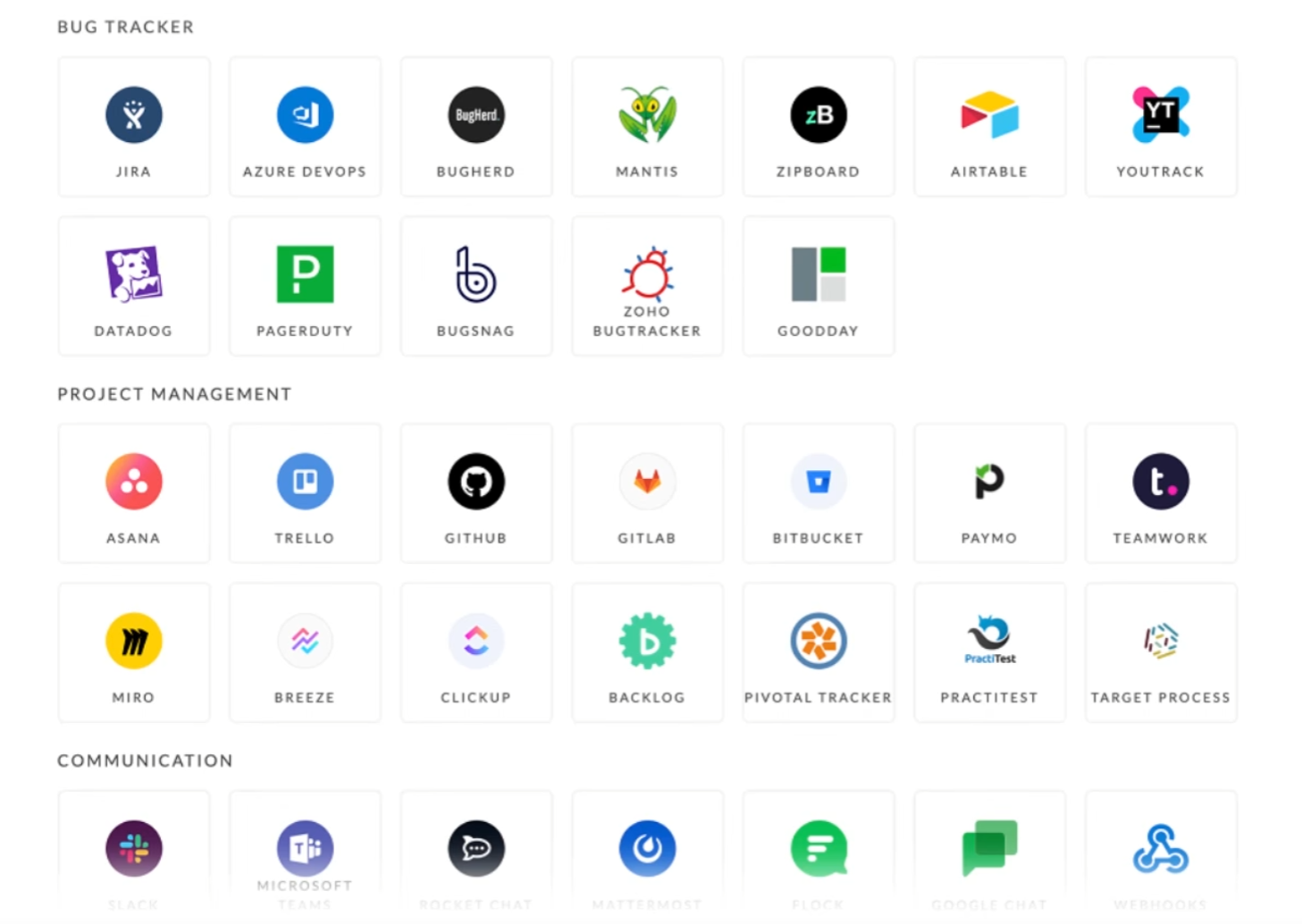
Highly secure
An application holds business value for the organization. The team always keeps it secure with minimum distribution within the organization to avoid any unwanted leaks or attacks. The organization often ensured this security by constantly working on the established internal network on the premises. Therefore, it’s natural to be concerned about online tools as they require file upload to install on their devices.
LambdaTest understands the confidentiality of the process and therefore keeps its infrastructure intact with maximum security. It is SOC Type 2 certified and GDPR compliant to ensure a smooth testing experience without external hindrances.
Extensive logging
Logging is an integral part of multiple post-testing processes. While debugging, finding the cause, pointing to the exact failed test case, and reproducing it to understand the flow is one option to improve a failed test, it’s definitely time-consuming and heavy on the budget. In such scenarios, logging can help us understand all those points without ever executing the failed test case. The only condition is that logging should be extensive and contain all the required data.
LambdaTest’s real device cloud need not integrate with any logger explicitly. It comes equipped with multiple loggers that include not only execution logs but also real-time device logs, such as the one pictured below.
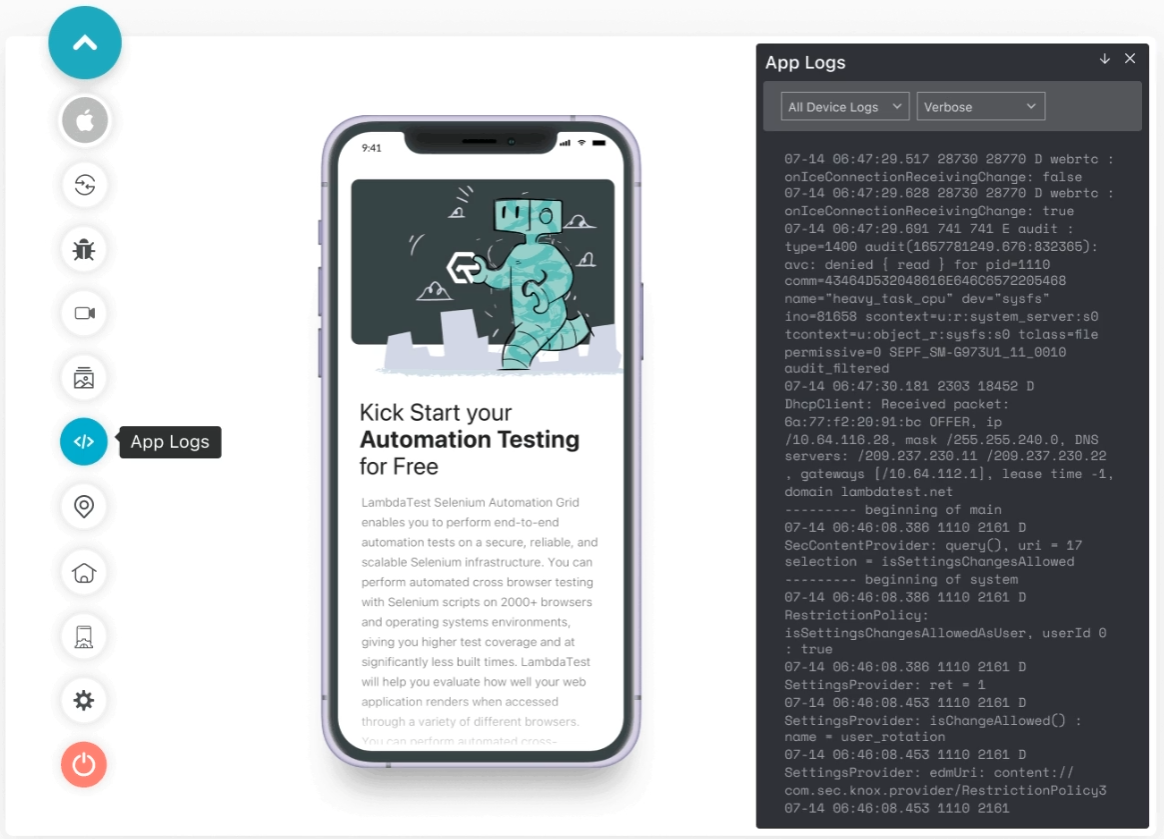
A tester can also retrieve network-related logs for the mobile application under test. All these logs are enough to guess the execution flow quickly and analyze the failures just from the logs without manually reproducing it on the cloud or a local real device.
Geolocation testing support
For organizations aiming to release their product outside their own region (or country), they need to adhere to that country’s laws. Apart from laws, geolocation testing use cases may arise when the application provides a service for which it has a license for a few countries, such as online streaming or targeting country-specific advertisements to the users.
All this means that the organization needs to test it in a similar way a user would use it within those geographical boundaries. Here, we can take the risky option of hiring a freelancer from that country (which is costly and unreliable) or get something to change the location on the same local system.
Geolocation testing has been a part of LambdaTest’s features for a long time. Since most organizations try to release their applications globally, geolocation testing from a single dashboard cuts down a lot of time and provides reliable results. The tester just has to select the country in the “Geo Location” option.
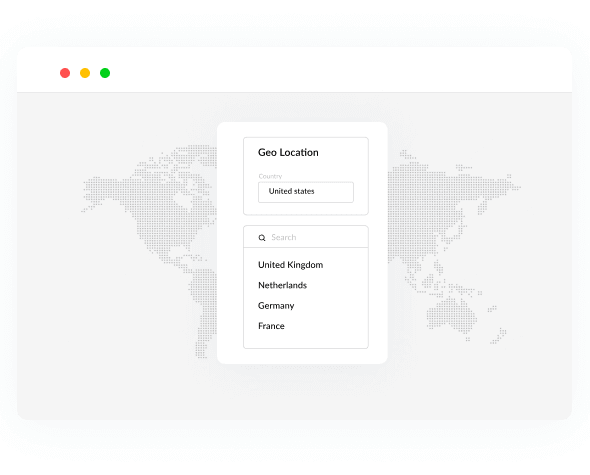
Once done, the application will reload with the location set as the selected country. From this point, the application will behave similarly to how it will when opened by a user in that country.
AI-powered test orchestration and execution
In the last couple of years, we’ve witnessed the strength of artificial intelligence and the amount of work it can perform in just a few minutes. As a result, it’s being implemented in a lot of areas in a vast variety of domains.
A tester might see self-healing and codeless test automation tools facilitated by AI, but the actual execution is still done the conventional way. For instance, you can write test scripts in English. However, they’ll still need to convert to a computer-understandable language, even if done through natural language processing, which is an additional step.
LambdaTest’s HyperExecute feature focuses on implementing the strength of artificial intelligence in the test orchestration and execution process. As a result, we see up to 70% faster execution cycles. In addition, AI is incorporated into the processes that surround test execution. HyperExecute can merge the logs from separate arenas into one detailed log for deeper analysis.
These combined logs and other results can be used to create one comprehensive joint report that’s easier to read and understand. This includes all the regular features discussed above, including an option to leverage HyperExecute with a private cloud setup!
Reporting
Finally, when all the real device cloud testing is performed, we need to analyze the results in the most detailed way possible. This responsibility goes to the final generated report prepared manually or through basic HTML.
A significant characteristic of a report is that everyone should be able to understand it quickly and easily. Be it non-technical or technical team members, the usage of graphical representation helps testers reflect in the future to understand their current test execution results with a variety of information.
LambdaTest provides an in-built reporting module called LambdaTest Analytics, developed by engineers keeping this characteristic in mind. LambdaTest Analytics keeps the information concise without omitting anything important and presenting it graphically.
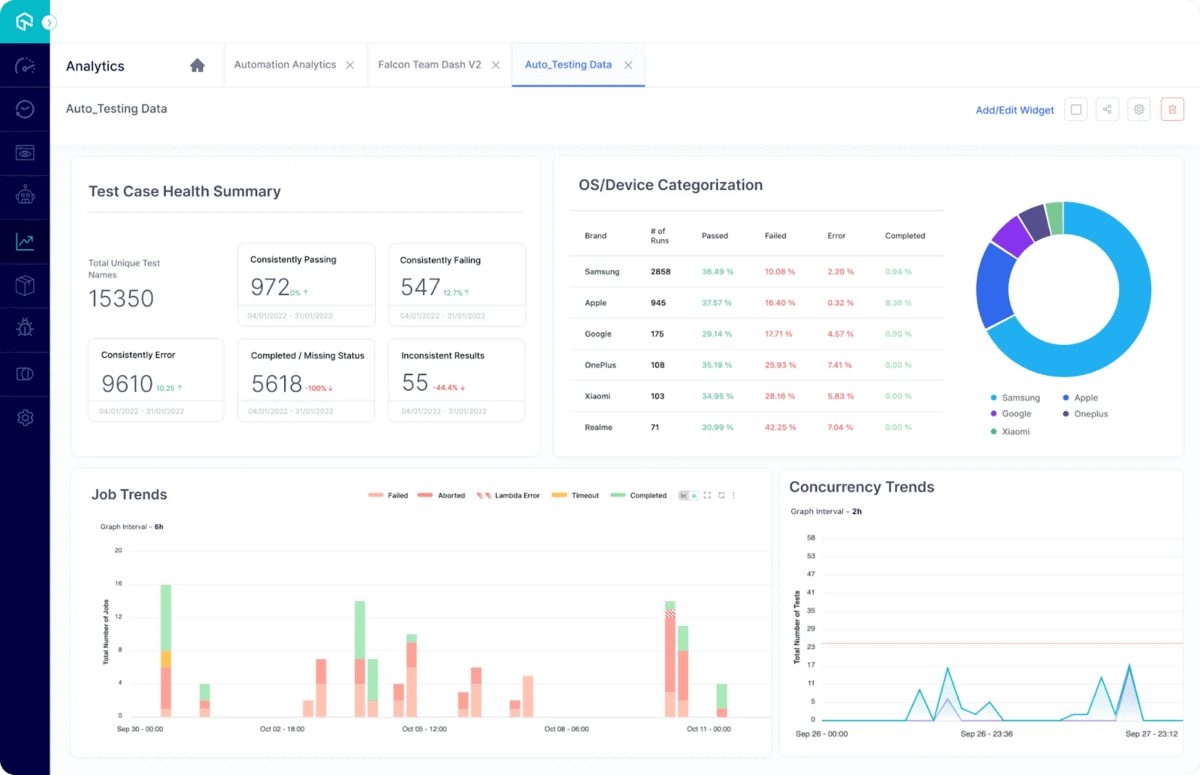
This report contains insight information such as test case execution, performance, coverage, test trends, and test status ratio as well. These features not only reflect your current test execution but also how your tests have been performing over a period of time on different parameters. It helps us analyze, reflect, and adjust accordingly.
All these standout features complement the common features of a generic real device cloud. This includes supporting the testing session with screenshot capability, video recordings, saving and sharing files, providing a canvas to mark certain portions of the images as bugs, visually comparing two screenshots, and so on.
Summary
A real device cloud is an online infrastructure of real devices that facilitates testing on mobile applications — native, web, or hybrid. They came into existence because establishing on-premises facilities is tough and costly.
Moreover, this is not a one-time cost. Every parameter involved in creating a real device lab continues to make its presence felt in the expense sheet at any time. Our assumptions also stand true when we witness high growth in the development and usage of emulators. Organizations that provide testing tools often keep their distance from real devices and find setting up an emulator lab more comforting. Hence, there are very few options on the Internet, and choosing the best tool is easier.
LambdaTest understands there’s much more to a device lab than just setting up real devices. For instance, even if we work on real devices and the process witnesses a lot of latency, it’s not a good experience.
Features such as HyperExecute implement AI into the system and reduce the execution and processing time to as much as 70%. LambdaTest also provides a large array of tools to use on the platform and minimizes the need for third-party tools as much as possible. And even if you want to use third-party tools, many integrations can help you there. All of this can be achieved without spending a hefty sum on individuals, small businesses, or large enterprises.
Frequently Asked Questions (FAQs) about Testing Mobile Apps on Real Device Cloud
What is the significance of testing mobile apps on a real device cloud?
Testing mobile apps on a real device cloud is crucial for ensuring the app’s functionality, usability, and consistency across different devices. It allows developers to test their apps on a variety of real devices with different operating systems, versions, and configurations. This is important because an app may behave differently on different devices due to variations in hardware, software, and network conditions. By testing on a real device cloud, developers can identify and fix these issues before the app is released, ensuring a smooth user experience.
How does real device cloud testing differ from emulator testing?
While emulators mimic the software and hardware of a device, they cannot perfectly replicate the actual device’s behavior. Real device cloud testing, on the other hand, involves testing on actual devices, providing a more accurate representation of how an app will perform in real-world conditions. This includes factors like battery usage, performance under different network conditions, and interaction with other apps and system features.
What are the benefits of cloud-based mobile app testing?
Cloud-based mobile app testing offers several benefits. It provides access to a wide range of devices and configurations, eliminating the need for developers to maintain a large inventory of physical devices. It also allows for parallel testing, which can significantly reduce testing time. Additionally, cloud-based testing provides scalability, enabling developers to easily increase or decrease their testing resources as needed.
What challenges might I encounter when testing mobile apps on a real device cloud?
Some potential challenges include dealing with device availability, especially for popular devices or configurations, and managing the cost of testing, as cloud-based testing services typically charge based on usage. There may also be issues with network latency, particularly when testing performance under different network conditions.
How can I ensure the security of my app during cloud-based testing?
Most reputable cloud-based testing services have robust security measures in place to protect your app and data. This may include data encryption, secure access controls, and regular security audits. It’s also important to follow best practices for app security, such as using secure coding techniques and regularly updating and patching your app.
Can I automate tests on a real device cloud?
Yes, most real device cloud platforms support automated testing. This allows you to write test scripts that can be run automatically on multiple devices, saving time and ensuring consistent testing.
How can I debug issues found during cloud-based testing?
Most real device cloud platforms provide tools for debugging, such as logs, screenshots, and video recordings of tests. These can help you identify and understand issues, making it easier to fix them.
Can I integrate real device cloud testing with my existing development tools?
Yes, many real device cloud platforms offer integrations with popular development and testing tools. This can streamline your workflow, making it easier to manage and execute tests.
How can I choose the right real device cloud platform for my needs?
When choosing a real device cloud platform, consider factors like the range of devices and configurations available, the platform’s performance and reliability, its support for automation and integration with your existing tools, and its security measures. It’s also a good idea to try out a few platforms to see which one best fits your needs.
What is the future of real device cloud testing?
The future of real device cloud testing looks promising, with advancements in technology making it even more efficient and effective. This includes improvements in automation, artificial intelligence, and machine learning, which can help identify and fix issues more quickly. Additionally, as more devices and configurations become available, real device cloud testing will become even more essential for ensuring app quality.
Sponsored posts are provided by our content partners. Thank you for supporting the partners who make SitePoint possible.

Published in
·Canvas & SVG·Design·Design & UX·HTML·HTML & CSS·Illustration·Usability·Web·May 26, 2016


